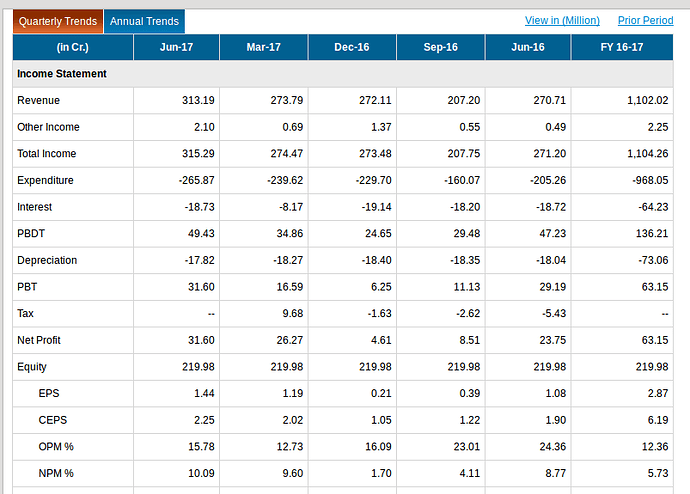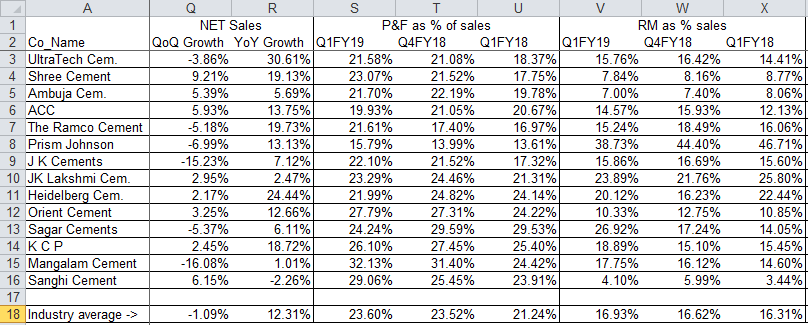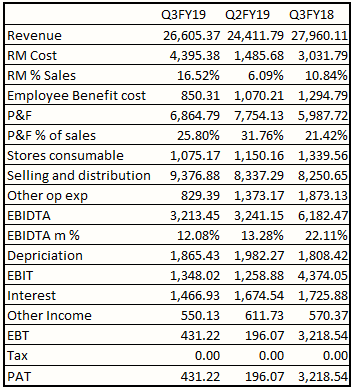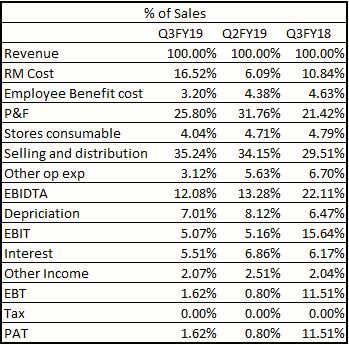Key Takeaways from Cement Expo 2018
Management Stake
Cement Head, Dalmia Bharat
East Region Head, UltraTech
President, Grey Cement, JK Cement
Director, Marketing, Penna Cement
CEO, Vicat Cement
Country Head, FLSmidth
Country Head, ABB
Director, Energy & Production, ACC Ltd
Director, India Ratings
SVP, Orient Cement
Director, ThyssenKrupp
CEO, Beumer
Head, Cement Refractories, Calderys
From discussing the strategies for promoting cement consumption, to the challenges affecting regional demand & supply scenario and thereon raise the cement per capita consumption, to efforts in adopting the substitutes of costly/dirty pet coke/coal and thereon reducing the carbon footprint, to optimized usage of raw materials (limestone etc) which have been used over last 100 odd years, to the concept of green cement and finally discussing the factors that can drive prices from the current juncture. This conference has answered all our major queries.
What are the divergent trends in demand-mix?
Traditionally, Housing Sector comprises 60-65% of total demand while Infrastructure took the backseat with merely ~30% of demand. Of late, Roads & Infrastructure segment has gained huge traction with multiple projects being executed in Smart Cities, Airports, Metro Projects, Sea Ports & Affordable Housing Projects. Share of Bulk Cement has shot up to 20% from 5% (in FY2013). Ready Mix Concrete (RMC) demand has picked up significantly on the back of humongous demand auguring from metro projects, mass housing projects, high-rise residential projects.
How are we planning to tackle the freight related issues?
Freight Cost is a function of fuel price, lead distance, rail-road-sea connectivity. Share of railways has gone down from 52% (in FY2013) to now 27% mainly because of the feasibility and technical challenges like overloading of rolling stocks, tracks being occupied and lower availability of wagons to Cement Industry by prioritizing the appetite of Power Sector. As an antidote, companies have been trying to focus more on roads and increase the share of waterways (if possible). Of late, few companies like Penna/Vicat have procured vessels for transportation across coastal routes to neighbouring countries and as a result their freight cost has declined substantially.
What kind of new technologies are coming to reduce the packaging cost for companies?
In 2018, BOPP kind of technology has been launched which will reduce the cost/bag by 30% (Rs2.1-2.5). Demand of Paper Packaging Bags has gone up on the backdrop of environmental concerns. There is a price difference of Rs10 between base quality and premium quality.
Given the backdrop of limited limestone reserves, what type of strategy can conserve the same?
At this juncture, PPC comprises of 56% while OPC comprise of 34% and rest by PSC. Limestone Reserves will exhaust in next 45-50 yrs. Henceforth, few State Govts are promoting the use of PPC/PSC related cement units which possess following advantages:
- PPC/PSC cuts down Co2 emissions
- Reduce Global Warming
- Sustainable Usage of Limestone Reserves
Limestone Calcined Clay (LCC) has emerged as the classic substitute of Limestone wherein the former helps in reducing environmental pollution. Director of ACC was of the view that Govt should premanently ban the usage of OPC especially in building dams, bridges, roads & affordable construction in order to save limestone and curb pollution levels.
As per the BSI Standards, what are the updated max usage criteria for raw materials?
Fly Ash – 35%
Slag – 65%
Pozzolana – 35%
Lime – 25%
Calcined Clay – 20%
Companies were of the view that the discussions for modifying the criteria is round the corners and will be promulgated in a couple of quarters. Excess blending can turn as a positive for the Cement companies that are located in the vicinity of the power and steel plants.
Considering the volatile price of dirty pet coke, what strategy can help the cement companies to adopt alternative of pet coke which will be less polluting and stable priced for the cement players?
Using 100% biomass (Sewage Sludge, Municipal Waste) is the only solution to tackle the problem of pet coke. Few State Govts like Maharashtra etc have been vying to dispose Municipal Waste into Cement Kilns and have achieved the same in many districts. To substantiate the same, ACC’s plant at Wadi is disposing 600 tns of waste per day since almost last 8 months.
What are the new technologies that can help in reducing power consumption?
Of late, Vertical Roller Mills (VRM) is in demand for the new expansions either organically or by way of debottlenecking. VRM is replacing Conventional Ball Mills and thereon helps in saving power upto 11-14 units/tn and also increases the output efficiency. In Cost Comparison, VRM is almost ~20% costlier than Conventional Mills.
What are the expectations of Demand Growth & Pricing Discipline in next 2-3 years?
While many players who attended the conference were of the view that FY19E demand will grow by 7-8%, they believe that Demand is expected to outpace GDP growth, going forward. Subsequently, Per Capita Cement Consumption will inch up to 300 kg by FY21E. Of late, pricing discipline is a result of joint effort by both small cap and large cap players and it’s bound to increase amid the busy construction season which will start from Jan’19 onwards. As an alternative, cement companies have been trying to increase the share of their premium category.






